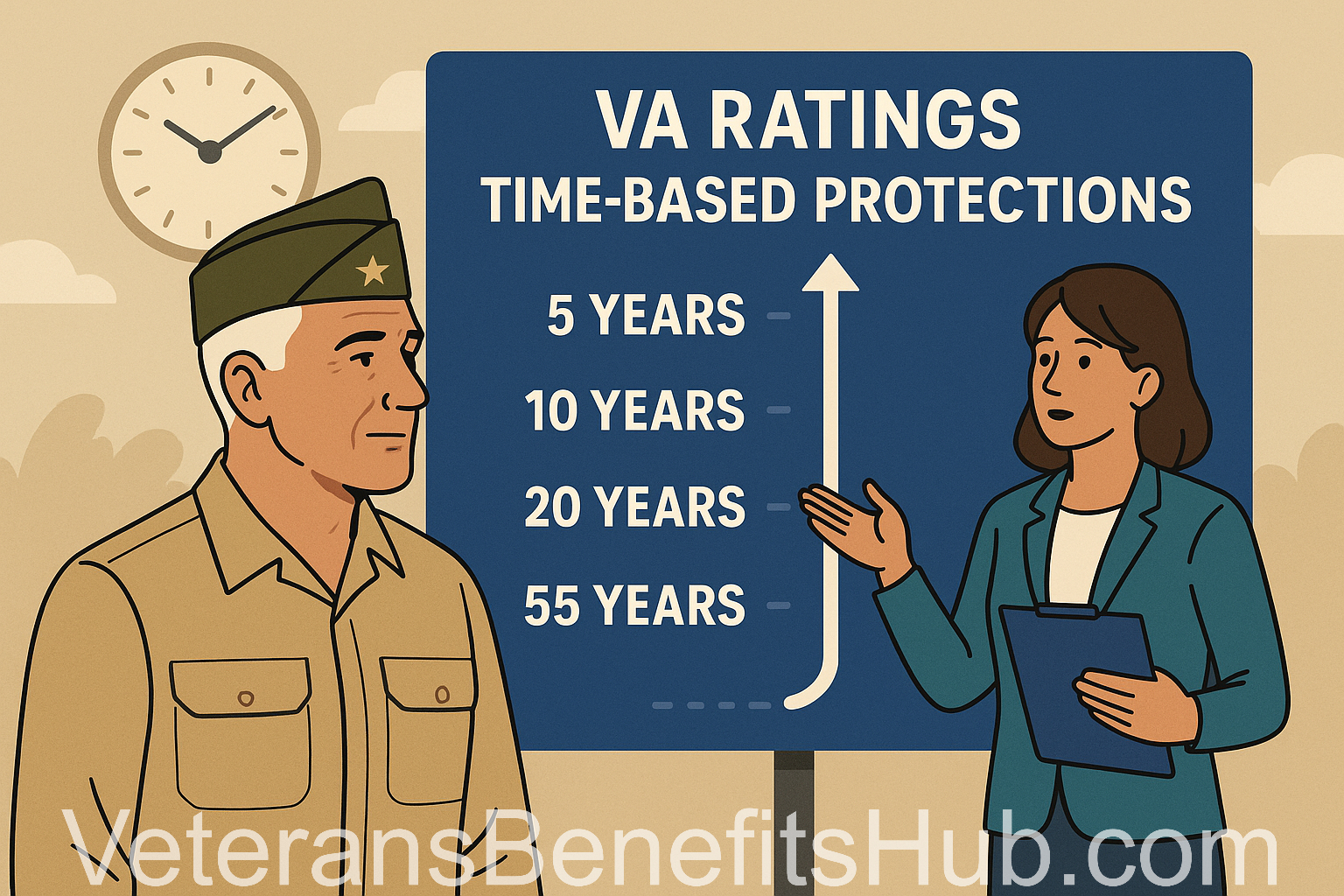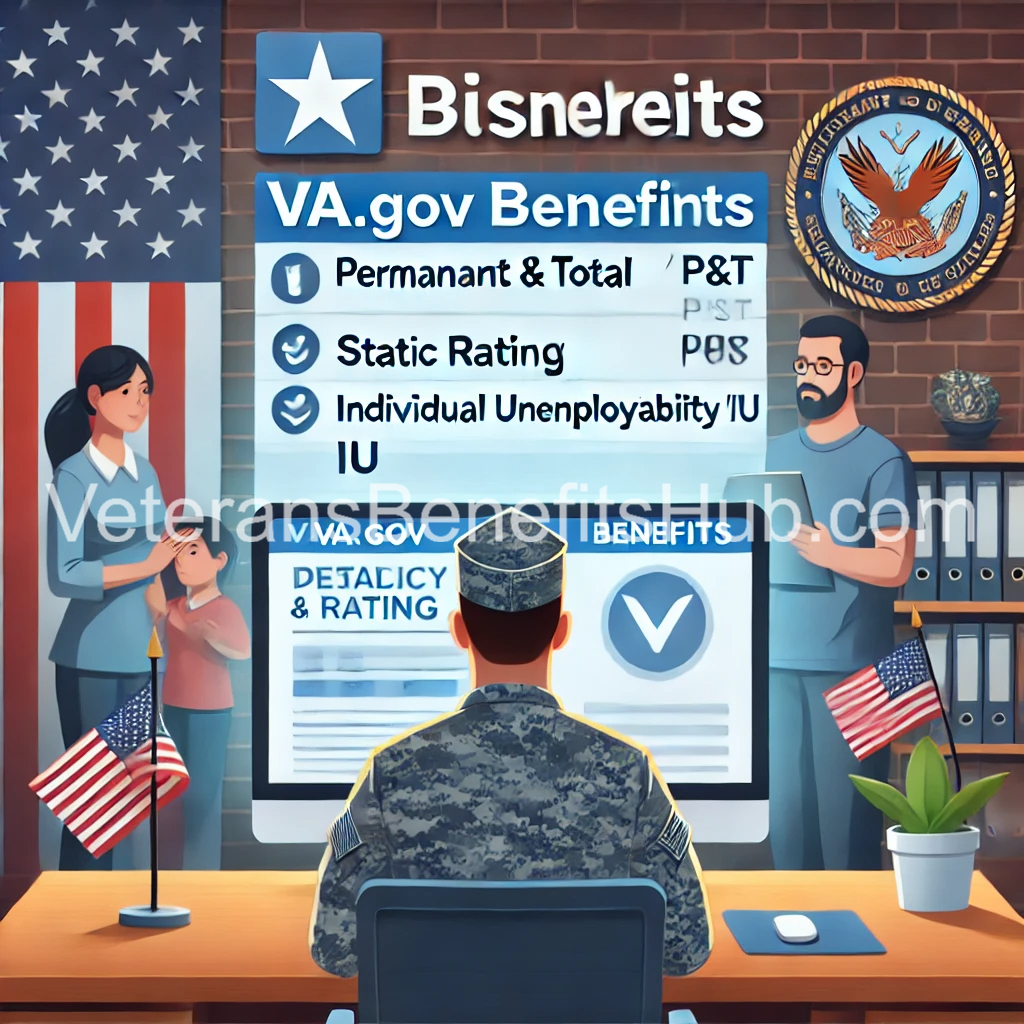Insights into Reductions of Static VA Service-Connected Disabilities for Veterans

Understanding Static VA Ratings and the Five-Year Rule: What Veterans Need to Know
Static VA ratings and the five-year rule are often misunderstood by veterans. Many assume a static rating offers protection against changes to their disability benefits, but that’s not entirely true. Let’s break it down and clarify why the five-year rule matters, what static ratings really mean, and how veterans can protect their benefits.
Static Ratings: Not a Protection, Just a Status
When you’re granted a service-connected disability rating, the VA assigns it either a routine future exam (RFE) or a static rating. A static rating means no routine future exam is scheduled to reassess your condition. However, this does not mean your rating is protected. Here’s the key takeaway:
- Before the five-year mark: The VA can review or adjust aFacials a static rating at any time, for any reason, without needing new evidence. This is often referred to as the VA acting “willy-nilly,” meaning they have significant discretion to reassess your rating.
- After the five-year mark: The VA needs clear evidence to reduce or change your rating. This makes the five-year rule a cushion, not a full protection.
Static ratings are not a shield. The only true protections are:
- 10-Year Rule: Your service connection is protected after 10 years.
- 20-Year Rule: Your specific disability rating is protected after 20 years.
The Five-Year Rule: A Cushion, Not a Guarantee
The five-year rule is often misunderstood as a protective barrier, but it’s more like a speed bump. After five years, the VA must have sustained improvement or other evidence to reduce your rating. Before five years, they can act with much less justification. While reductions are not common, they do happen, so it’s critical to understand this distinction.
The 55-Year Rule: Same as the Five-Year Rule, Just Older
The 55-year rule is essentially the five-year rule applied to veterans aged 55 or older. It acts as a cushion, not a protection. The VA is less likely to schedule routine future exams for veterans over 55, but your rating can still be reviewed if evidence suggests a change in your condition. For more details on the 55-year rule, check out our in-depth video linked below.
Routine Future Exams: Less Common, But Still Relevant
In 2022, the Office of Inspector General (OIG) criticized the VA’s overuse of routine future exams, leading to a significant reduction in their frequency. However, they haven’t disappeared entirely. If you’re approaching or past the five-year mark, the VA must provide evidence to justify scheduling an exam or reducing your rating. Before five years, they have more flexibility to request exams or adjust ratings.
Submitting VA Claims: Avoid “Poking the Bear”
One common mistake veterans make is submitting claims piecemeal, which can draw unnecessary attention to their file. Here’s how to approach claims strategically:
- Submit all claims at once: Don’t space out your claims over weeks or months. Filing multiple claims in a short period can trigger a review of your existing ratings.
- Use the Intent to File (ITF): The ITF gives you a full year to gather evidence and submit a complete claim. Take advantage of this time to compile all relevant medical records, buddy statements, and other supporting documents.
- Submit evidence upfront: Avoid submitting additional evidence weeks after filing. While you can add evidence later, it’s best to include everything in your initial submission to minimize delays and scrutiny.
By submitting a thorough, well-documented claim from the start, you reduce the risk of the VA re-evaluating your existing ratings unnecessarily.
Why Static Ratings Matter: P&T vs. Vanilla 100%
Static ratings are critical when aiming for Permanent and Total (P&T) status. A P&T rating offers significant benefits compared to a standard (“vanilla”) 100% rating, including:
- Dependents’ educational assistance
- Commissary and exchange privileges
- Waived VA funding fees for home loans
- Potential state-specific benefits
Without static ratings, achieving P&T status is unlikely. Veterans should regularly check their rating status to ensure their conditions are correctly designated as static, which can be done online in about three minutes without needing a FOIA request or consulting a Veterans Service Officer (VSO).
Common Misconceptions About Static Ratings
Many veterans mistakenly believe a static rating means their benefits are untouchable. This is not true, especially within the first five years. The VA isn’t actively targeting claims to reduce ratings, but submitting poorly prepared claims or spacing out submissions can inadvertently trigger a review. Understanding the five-year, 10-year, 20-year, and 55-year rules helps veterans make informed decisions about their benefits.
How to Check Your Static VA Ratings
You can verify whether your ratings are static by accessing your VA account online. This process is quick and straightforward:
- Log in to your VA.gov account.
- Navigate to the “Disability” section.
- Review your rating decision letter or disability details to confirm whether your conditions are marked as static.
If you’re nearing 55 or have questions about routine future exams, consult with a VSO or review the VA’s M21-1 manual for guidance on exam scheduling.
Final Thoughts
Static VA ratings and the five-year rule are often misunderstood, leading veterans to overestimate the security of their benefits. By understanding that static ratings are not inherently protected, especially before the five-year mark, you can take proactive steps to safeguard your benefits. Submit complete claims, use the Intent to File wisely, and regularly check your rating status to ensure you’re on track for P&T or other long-term protections.
For more insights, watch our detailed video on the 55-year rule and static ratings, linked below. Stay informed, and don’t let common misconceptions jeopardize your hard-earned benefits.
Disclaimer
The information provided in this article is for general informational purposes only and does not constitute legal advice. VeteransBenefitsHub.com is not affiliated with the U.S. Department of Veterans Affairs (VA). For personalized guidance on your VA benefits or claims, consult a qualified Veterans Service Officer (VSO), accredited attorney, or claims agent. Always verify information with official VA resources or regulations, as policies and procedures may change.
